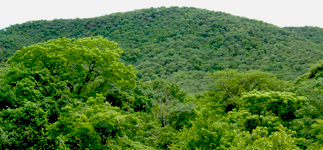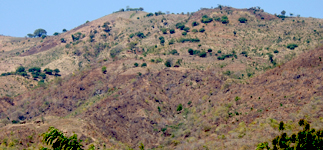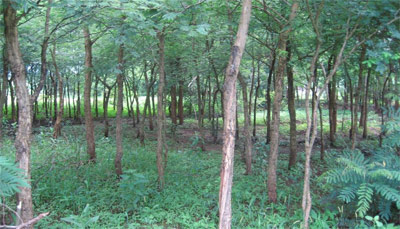Written by Matt Frye
In 1972 Malawi had roughly 4.5 million hectares of forests. In 2010 it had 2 million hectares of forest – a decline of 54% forest cover over 40 years. Deforestation is a serious issue in Malawi that is exacerbated by multiple drivers that all correlate with one another. One of the main drivers of deforestation in Malawi is the demand for fuelwood. 90% of the population depends on fuelwood for cookstoves and ”illegal” charcoal takes 6 tons of wood to produce 1 ton of charcoal. Malawi is also heavily invested in tobacco production which uses significant amounts of wood in the curing process. Tobacco, though, also attributes to 13% of the GDP, 23% of all tax revenues, and 70% of all export earnings in Malawi, complicating government policy on how to curb deforestation driven by tobacco production.
Another major driver of deforestation is agriculture. Whether it be maize, tobacco, or specialty crops, poor agricultural practices such as ridging, burning, no rotation maize cropping, inefficient input use, and excessive tillage has led to significant declines in soil fertility and increased erosion. In response to diminishing yields, smallholders clear forest cover and encroach on marginal lands to make up the difference from years prior, an endless cycle until all of Malawi’s forests are gone and soils depleted.
In 2005, agriculture contributed to 13% of all global carbon emissions and deforestation accounting for 18% of all carbon emissions (14% due to agricultural expansion). This puts nearly a third of all global carbon emissions directly linked to agriculture and deforestation. With proper management, forests and agricultural land can serve not as carbon emitters but carbon “sinks” storing biological carbon in biomass and soil organic matter. The development community has focused their energy on mitigating these land use changes through multiple efforts.
One major project being implemented in Malawi is the start of a UN-REDD+ program. REDD+ is a UN strategy for climate change mitigation through reducing emissions from deforestation and degradation. Kusamala has been invited to a continuing series of Expert Group Panel’s here in Lilongwe to discuss and help guide the development of an effective program for Malawi. REDD+ is a program that can generate monetary revenue for a country through the sale of carbon credits. For instance, if a company in Europe was required to offset 20,000 tons of carbon emissions they could do so by “buying” carbon credits through a regulatory carbon market such as a REDD+ program focused on preserving carbon stocks in the form of existing forests.
This sale, though, hinges on a Verified Carbon Standard (VCS) sold through a regulatory or a voluntary market to insure that a ton of carbon can be verified as being such. With the Kyoto Protocol expiring and in light of recent negotiations at the UNFCCC a regulatory financing mechanism through the Clean Development Mechanism (CDM) is not likely to exist until 2020. Despite a possible absence of a CDM market for REDD+ carbon, the REDD+ program in Malawi is moving forward as “no regrets REDD”. It is seen as an opportunity to reinvigorate the Forestry Sector and to provide Malawi the necessary data to address policy changes and development initiatives to curb the drivers of deforestation. Expecting future carbon emission legislation, companies such as Microsoft and Ebay have already started buying carbon credits through voluntary markets. If and when a regulatory market arrives Malawi will be ready to participate.
A REDD+ program is an extensive and expensive process to undertake which has prompted the U.S. Forest Service, USAID, and other development partners to help in the undertaking. Despite the active involvement and participation by the government, the project is still a number of years out as the technical aspects such as developing a baseline must be completed as well as policy changes that will help in the issue of their not being clear land tenure rights or carbon rights in Malawi.
Total Land Care, another Malawian NGO, presented one of their promising projects selling REDD+ carbon credits through the voluntary market with the help of Terra Global Capital and U.S. AID. The Kulera Biodiversity project was able to protect existing forest carbon and biodiversity while also providing “livelihood packages” for 45,000 households (225,000 people) bordering the forests reserves. These “packages” were intended to both increase rural livelihoods as well as increase rural incomes. This included training in conservation agriculture, income diversification, fuel efficient rocket stoves, sound resource management, village savings and loans, and building local capacity to produce, process, and market their agricultural products.
Kusamala hopes to utilize the lessons learned from the Kulera Biodiversity Project to implement grant funding for low scale carbon financing projects through the voluntary market for our two Climate Smart Agriculture grants. We are especially interested in combining the benefits of mitigating emissions while also promoting community resilience and conserving biodiversity within our project areas.








I have purchased a farm in Monkey-Bay and we intend to make it a commercial farm. We have a big forest that we would want to use in carbon marketing. what should I do
I am at Nkhamenya and I have land I intend to use it for commercial carbon farming. What are the entry procedures for participation?
Hello Andrew
There is no specific requirement to enroll for our courses. Please email us through info@kusamala.org or call/whatsapp 09999063509 for further discussions.
Thanks